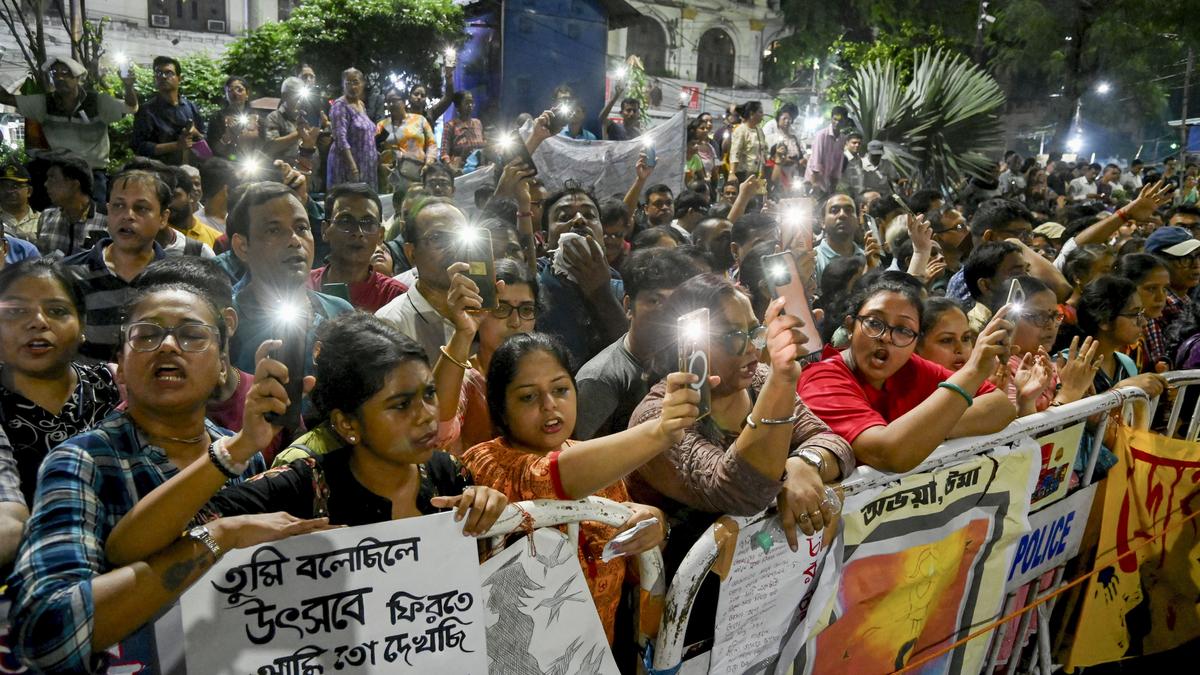
Kolkata doctors’ strike: unearthing malaise in health care systems Premium
The Hindu
Doctors in India protest poor working conditions, low healthcare spending, and corruption, demanding government action for change.
The rape and murder of a doctor at Kolkata’s R.G. Kar Medical College on August 9 brought doctors all over the country onto the streets. As of now, junior doctors in Kolkata have been on a hunger strike for several days, and their peers in other parts of the State have expressed their support with symbolic strikes of their own. Three doctors on hunger strike have had to be hospitalised after their condition deteriorated. The State Government has thus far punished many police and administrative officials.
Even through breaks in the agitation, the health workers have maintained that underlying issues are far from resolved. Their protest has sought, among other things, a complete overhaul of the healthcare system. They have reported working 36-hour shifts on meagre allowances, without proper rest rooms, and have been left vulnerable to violence at their workplace.
These working conditions are not restricted to West Bengal. A report by the Indian Medical Association in 2018 said 75% of doctors in India have at some point been exposed to harassment or physical violence inside health centres or hospitals, largely due to lack of infrastructure, medicines, long working hours, and excessive political interference. Yet successive governments, both at the Centre and in the States, have swept these pressing issues under the rug.
India’s declared expenditure on healthcare is only 2% of its GDP, compared to the 5-10% in China and Brazil. The success story of Cuba’s healthcare system is rooted in its spending 14% of its GP on health. In India, continued state-led apathy towards favourable government policies, plus long-standing low-quality healthcare infrastructure, has allowed the private sectors to flourish at the public sector’s expense. From 8% in 1950, the private sector captured nearly 70% of India’s total healthcare market in 2024.
According to the National Sample Survey, the cost of treatment in private hospitals is seven-times that in government hospitals, yet only 14% of the rural and 19% of the urban populations have health insurance to help cover the resulting costs.
The consequences have been disastrous. Even as India’s public sector per-capita expenditure on healthcare has steadily declined, out-of-pocket expenses for individuals have soared. According to official data, of every ₹100 an individual spends on healthcare in India, ₹52 is from savings, while the Central and the relevant State governments together contribute ₹35. To compare, Brazilian and Cuban citizens spend₹22 and ₹8, respectively, out of their pockets.
A study by IIT Mandi published in December 2023 reported that much-touted government health schemes — including the Centre’s Ayushman Bharat Pradhan Mantri Jan Arogya Yojana and West Bengal’s ‘Swasthya Sathi’ — mostly cover treatment costs for inpatient admissions but provide almost no coverage for outpatient services, which account for up to 80% of the total healthcare expenses in India.











